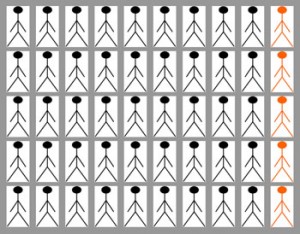What is Attrition Bias?

Attrition bias happens when participants drop out from a study; The drop-outs have unique study-related characteristics, resulting in a difference between initial and ending samples. Selective attrition bias happens when the differences are between control groups and treatment groups (as opposed to beginning and ending samples). If the study-related characteristics are completely random with no systematic pattern, then attrition bias does not happen.
Effect on Validity
Missing or incomplete outcome data due to attrition bias can weaken internal validity and external validity. Weakened internal validity means that the interactions between the study variables (i.e. the variables i your experiment or study) are changed and may even become meaningless. For example, correlations may be found where there are none, or important correlations may be missed entirely. Weakened external validity means that the study cannot be generalized to other populations.
How Much Attrition is Too Much?
The question of “how much” attrition results in bias is open to debate. An attrition rate of under 5% is usually no concern (Schulz and Grimes, 2002), while rates in excess of 20% may be cause for concern. However, these aren’t steadfast rules — a study with a low attrition rate might be more susceptible to bias than a study with a higher attrition rate if the drop-outs have very unique characteristics.
Prevention
The following measures may help to lessen the effects of (or prevent entirely) loss of data from attrition:
- Create a project identity,
- Keep follow-up interviews as brief as possible,
- Offer incentives (e.g. cash),
- Use a good tracking system with detailed contact information,
- Remind participants of appointments with postcards and telephone calls.
References
Mason, M. (1999). A review of procedural and Statistical methods for handling attrition and missing data in clinical research. Measurement and Evaluation in Counseling and Development, 32, 111–118.
Schulz KF, Grimes DA. Sample size slippages in randomised trials: exclusions and the lost and wayward. Lancet 2002; 359:781–85.